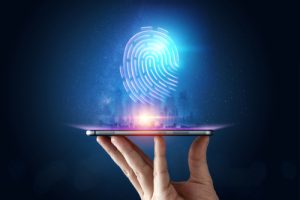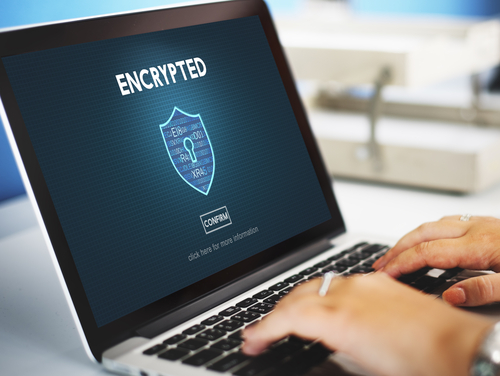Ever wonder how much of your online activity is anonymous when using a VPN? Most people know VPNs hide your IP address, but few realize there’s another identifier still exposed – your device’s MAC address. This unique number can provide tracking clues about you even when privacy tools are in place.
In this article, we’ll look at whether your MAC address is truly hidden from prying eyes when using a VPN so you can better understand your true level of online anonymity.

What Is a MAC Address?
Your MAC address, which stands for Media Access Control Address, is a unique identifier for your network hardware. Specifically, it’s a number that’s hard-wired onto your network adapter card, whether that’s built into your computer, mobile device, router, etc. This allows other devices on the network to recognize and communicate with your machine.
You can think of the MAC address as your network card’s postal address. Like your home address, it never changes and remains tied to that specific device. Networks use the MAC to figure out who’s who and avoid collisions when multiple devices talk to each other.
Even though it’s just a series of numbers and letters, no two MAC addresses are the same. This ensures your device can be uniquely identified from all others on the network. MACs are typically written like this: 00-11-22-33-44-55. The first half of that ID refers to the manufacturer, while the second half is unique to your device.
When your device sends data over the network, the MAC address is included to identify the source. Things like wireless routers, switches, and firewalls use this to know where traffic is coming from and where it needs to go. The MAC essentially serves as the return address so the network knows which device a response needs to get routed back to.
For networking to function properly, devices need to be able to readily identify each other at the hardware level using MAC addresses. Since they serve as hardware IDs, there’s no way or need to hide them from being locally visible on a network. Hiding it could cause connection issues. So, for convenience and performance reasons, MAC addresses remain openly broadcast most of the time.
How To Find The MAC Address For Your Device
Finding your device’s MAC address is straightforward but varies slightly depending on your device’s operating system. On Windows computers, you can usually find it easily by opening the command prompt, typing “ipconfig,” and then hitting enter. This will display your IP configuration details; the physical address listed is your MAC.
For Macs, open System Preferences and click the Network icon. You’ll see the MAC of your currently active network adapter displayed here. On mobile devices, go to Settings and look for Network settings. On iPhones, the MAC is under the name Wi-Fi address. Androids list it as the MAC address. You can also access it by looking at your device’s About section.
For network gear like routers, you’ll typically find the MAC printed right on the back or bottom of the device. But you can also view it through the admin control panel once logged into the router’s configuration page.
How Is a MAC Address Different From an IP Address?
The MAC (Media Access Control) address and IP (Internet Protocol) address are two different identifiers for devices on a network, but they can be easily confused since they both involve networks. So how do they differ?
The MAC address is a unique identifier assigned to network interfaces for communications on the physical link layer of a network. It serves as a hardware fingerprint for devices and consistently remains with the network card or interface. The IP address, which stands for Internet Protocol Address, is a logical address used in an Internet protocol to identify and locate devices on a network and enable communication via software.
The main distinction between these two is the layer of operation. A MAC address works at the lowest network layer, called the link layer. It uniquely identifies hardware like your network card or router. An IP address works one layer above the internet layer. It represents the logical address understood by software and online protocols.
In practical terms, this means MAC addresses are hardcoded into network interfaces, while IP addresses can change. Your router assigns you a new IP each time you connect, but your MAC stays consistent. IP addresses also allow for things like network address translation (NAT), letting many devices use one public IP while each has its own private MAC.
Additionally, MACs are six pairs of hexadecimal numbers, like 00-A1-B2-C3-D4-E5. IPs have four groups of numbers under 255 separated by periods, like 192.168.1.100. And while you have one MAC, you can have multiple IP addresses through WiFi, Ethernet, mobile data, etc.
How VPNs Work?
VPN stands for Virtual Private Network and allows you to extend a private network across a public one and securely access resources located somewhere else.
When you connect to a VPN, the software creates an encrypted “tunnel” between your device and the VPN server. All your network traffic is then securely transmitted through this tunnel. On one end is your regular public internet connection; on the other is the private network you’re trying to access.
By routing your traffic through the VPN’s server, your actual IP address gets hidden and replaced with one from the VPN provider. This masks your device’s physical location and online identity. The VPN acts as an intermediary, so you appear to be inside that private network while enjoying the convenience of remote access.
When you use the internet without a VPN, your true IP address is out in the open. This makes it easy for websites, advertisers, and even your internet provider to track your browsing habits over time. But positioning the VPN between you and the web breaks the direct line between your device and watchful eyes.
This simple trick is very effective at concealment – your online activities are no longer linked directly to you.

Does Your VPN Hide Your MAC Address?
The short answer is no – VPNs aren’t designed nor able to mask your MAC address. The VPN protects your online activities and disguises your IP address by routing all your internet traffic through an encrypted tunnel. However, it cannot mask or change the MAC address itself.
Your MAC is a unique hardware identifier hard-coded into your network interface card. It needs to be visible on local networks so devices can properly communicate. A VPN acts after your initial network connection, so your MAC broadcasts normally when first joining WiFi or Ethernet.
So network operators, as well as any other devices connected, can still see your MAC as you connect and before the VPN encryption kicks in. The MAC isn’t routing any traffic itself. Still, publicly available WiFi routers sometimes log this hardware ID along with time/date stamps for troubleshooting purposes. This makes it possible to still identify you separately from other VPN users on that network.
Once that initial connection handshake is done and your VPN tunnel is established, your actual online activities, like browsing, streaming, etc., are fully hidden and anonymous, thanks to the VPN’s encryption. Your real IP address is swapped out at that point, too.
Why Your MAC Address Should Never Be Exposed
While brief MAC exposure when connecting privately may not be a concern, fully disguising this identifier has some benefits. After all, why freely give strangers potential insight when privacy is so easy to maintain? Let’s explore some key reasons why full MAC exposure is best avoided.
Online Tracking
Nowadays, it’s no secret that our online lives are closely tracked by advertisers, data brokers, and who knows who else. Cookies in browsers and device fingerprints are commonly used to map out your habits and interests over time. Now, while your MAC itself isn’t directly broadcast online, it can still pose risks if exposed in certain scenarios.
For instance, consider using public WiFi hotspots. Airports, coffee shops, even your neighborhood – these networks see your IP and your unique MAC code. With that, together with timestamps, they could build a profile associating your device with locations visited. This behavioral data gets sold to the highest bidder before you know it.
And it doesn’t end there. If telemetry from routers and nearby devices happens to record your MAC, analytics firms have been known to suck up tons of this kind of “open data” floating around and merge it with online activity profiles. Suddenly, they’ll have a good idea of exactly what kind of person is using a specific device.
While MAC exposure alone isn’t fully tying you to profiles, these anonymous fingerprints can still represent you in aggregate data pools. And as linking technologies improve, who knows how identifiable it may become down the line?
Reduced Anonymity
When you think about staying anonymous online, your MAC address probably isn’t the first thing that comes to mind. But anything that consistently identifies your device does infringe on your ability to keep a low profile in the digital world.
Of course, anonymity is a spectrum – total invisibility may be impossible. But reducing identifiable markers as much as possible is a fair goal, especially on less-trustworthy networks.
While individual actions seem anonymous on their own, behaviors can become traceable back to you when linked to persistent identifying traits. So, things like timing patterns of internet use matched to a device’s permanent MAC code. Over time, patterns could potentially point to who’s doing what through their connection styles.
Targeted Attacks
While most of us surfing around aren’t super high-priority targets, keeping devices hidden comes in handy when evading all sorts of potentially sketchy folks online, too. MAC addressing makes hijacking attempts a bit scarier for one. With your MAC visible, attempts to interfere with your connection or impersonate your device become simpler.
Determined operatives may scan networks specifically looking for what you have if they think you look interesting. Phishing can also come into play when aliases can be backed up with hardware fingerprinting. Before you know it, you get tagged across domains with personalized spam just for your eyes based on what they observe you clickin’ through.
Location Tracking
Another thing to consider is how your MAC could be used for location tracking if left out in the open. This probably isn’t a huge deal for many people, but it’s still something to consider.
Whenever you connect to WiFi networks publicly, your MAC is visible to whoever manages that network. And many networks these days, like at cafes or airports, are collecting a lot of usage data. With that information, it would be easy for them to start building maps showing which devices frequent their locations. Your MAC becomes linked to specific geo coordinations over time.
So companies now get insights into your travel patterns, whether it’s for ad targeting or even creepier purposes. And if other networks happen to record your MAC, too, during travels, the dots start connecting further across different places.
Not to mention, nearby Bluetooth and WiFi sniffing devices can potentially scan MACs along with approximate locations these days, too. It all contributes to a digital fingerprint of your comings and goings.
How To Protect Your MAC Address
MAC Randomization
Randomization allows your device to change its MAC on the fly dynamically. When you move between different public WiFi networks throughout the day, your device broadcasts its MAC address even if you don’t connect to search for available networks.
This broadcast makes it easy for third parties to track your physical location and build usage profiles over time based on the networks you’ve been exposed to. With MAC randomization, your device will automatically assign a random MAC each time it broadcasts while not connected to any network.
When you connect to one, it will stop randomizing to maintain a stable connection. This prevents your actual MAC from being shared widely during transit while not negatively impacting your ability to connect where needed. Many modern devices have this feature built-in by default.
MAC Spoofing
Instead of letting your device broadcast the MAC address assigned to it by the manufacturer, spoofing allows you to replace it with a fake MAC manually. Every device has that unique hardware ID, but sometimes you might want to disguise yours for privacy or security reasons.
When you spoof your MAC, you’re essentially telling your network adapter to use a different MAC than the one it was given. This fakes out anyone trying to identify your device based on that identifier. With spoofing, you can choose any 12-character string you want as a replacement.
It provides a simple way to muddle the connection between your physical hardware and its digital fingerprint online. That single static ID that’s always broadcast is now a moving target. Of course, you’ll need to know the steps specific to your operating system and device type to spoof the MAC successfully.
Conclusion
While a VPN doesn’t conceal your MAC address directly, it does add another strategic layer of protection to safeguard your privacy and online security. And when you combine it with built-in MAC randomization or manual techniques like spoofing, a VPN strengthens your defenses against MAC tracing even further.
But the bottom line is that online anonymity in the modern digital world requires an in-depth defense approach.

